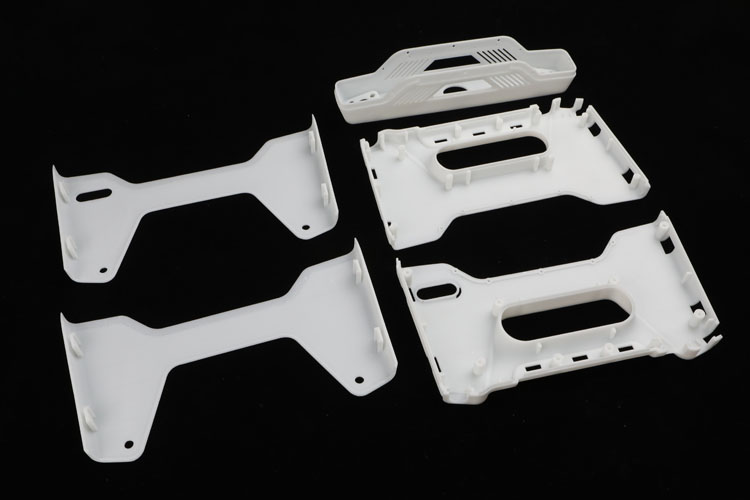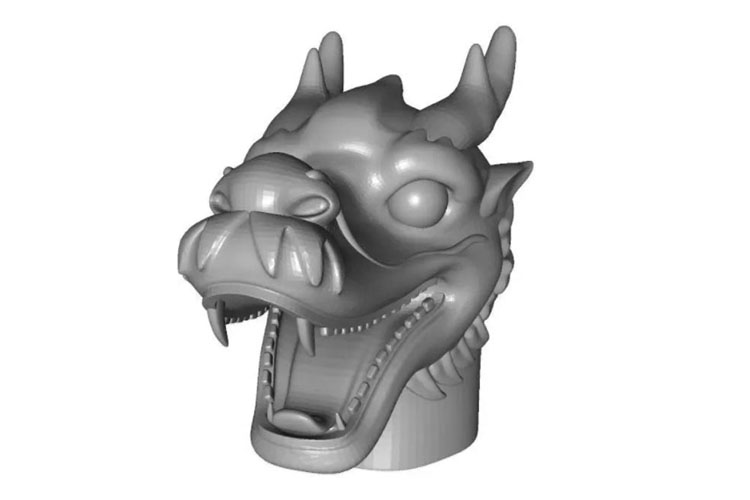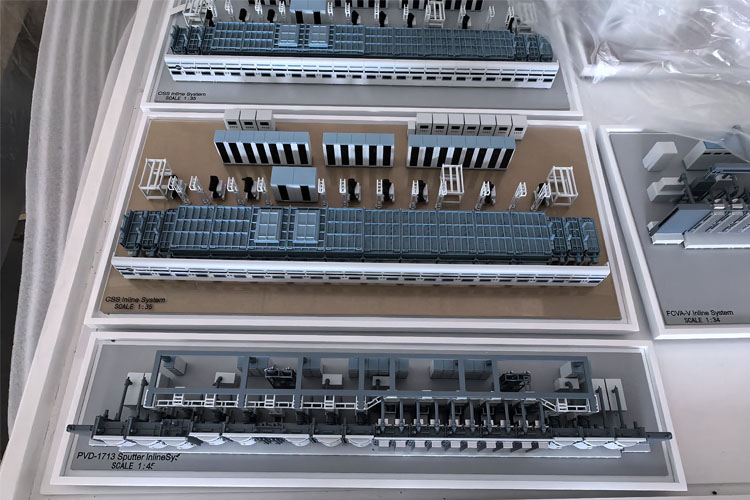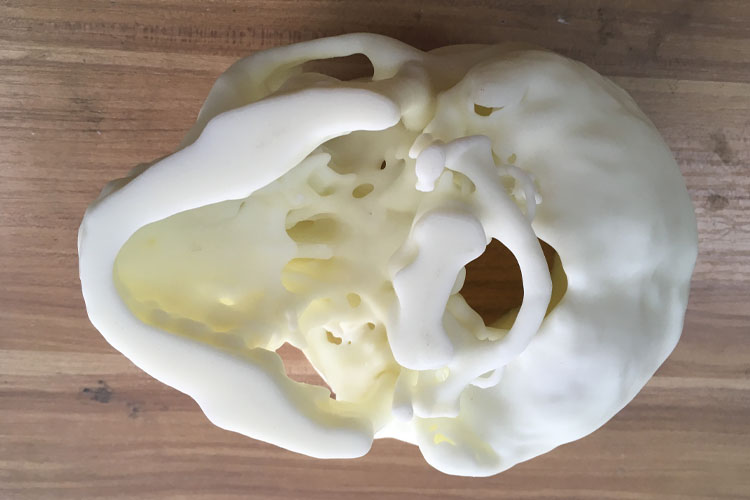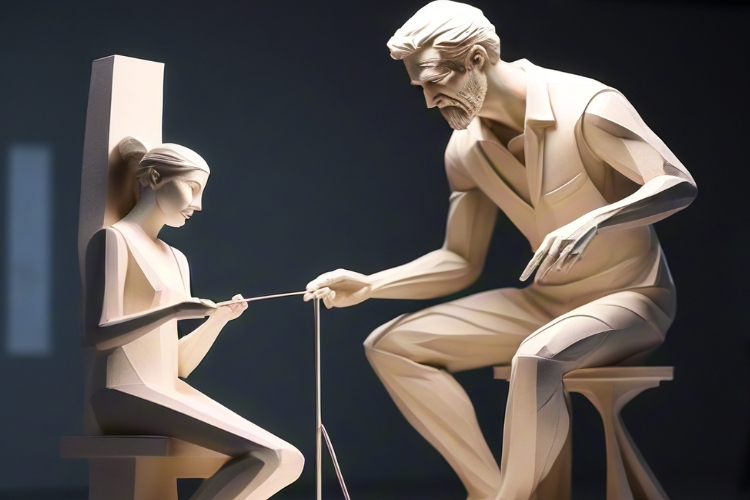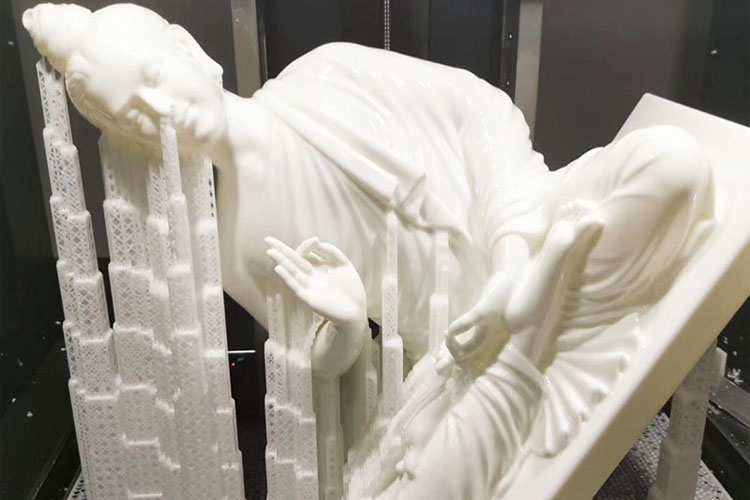Application of 3D printing in sculpture field
3D printing technology, with its nearly infinite shaping capabilities, has brought revolutionary innovation to the field of sculpture art. For traditional sculptors, it is not a threat but a new and powerful technical supplement. Faced with this technological innovation, some sculptors may have misconceptions, fearing that the new technology will encroach on the territory of traditional craftsmanship or dismissively regard 3D printing as a product of industrial manufacturing.
However, we must be clear that 3D printing is not a substitute for sculpture, just as photography cannot replace the artistic value of oil painting. It is merely a tool, a tool that can help artists in the creative process, giving them more agility and prowess. Especially when 3D scanning is combined with 3D printing technology, this digital combination has produced remarkable effects in the sculpture industry.Let's explore the wide application of this digital combination in the field of sculpture. Through 3D scanning, artists can accurately capture and replicate objects or scenes from the real world, transforming them into digital models. And 3D printing technology can quickly and accurately produce physical sculpture works based on these digital models. This combination not only greatly improves the efficiency of sculpture production but also provides artists with more creative possibilities and freedom.Therefore, we should embrace 3D printing technology with an open mind, considering it as a powerful tool to drive the development of sculpture art. Let us look forward to more amazing artworks created by this digital combination in the field of sculpture.
♦Mold turning technology in sculpture◊In the sculpture industry, replication has been a long-standing craft technique used to replicate meticulously carved manuscripts by artists. Traditional replication methods usually rely on materials like silicone or fiberglass, pouring replicas based on carved pieces. However, this method has several significant flaws: firstly, the replication material may deform during the process, causing the work to deviate from the artist's original idea; secondly, the replication process lacks flexibility, requiring a remake if an error occurs; most importantly, traditional replication is destructive to the artist's original manuscript, as it is often irreversibly altered once replication is complete.Fortunately, through the combination of 3D printing and 3D scanning technology, we have found a more advanced and efficient solution. First, using 3D scanning technology, we can accurately digitize the artist's manuscript, capturing every detail. Then, through 3D printing technology, we can directly print sculpture works based on these digital data. This method not only perfectly presents the artist's creativity, avoiding deformation issues caused by replication materials but also greatly enhances the flexibility of production. If an error occurs during printing, we can easily make modifications and adjustments without the need to remake the entire work. Furthermore, since the original manuscript is digitally preserved, the artist can reprint it anytime without worrying about damage to the original. The combination of 3D printing and 3D scanning technology brings significant advantages to sculpture production, allowing artists to produce works more efficiently and accurately while retaining the integrity and reusability of the original manuscript.
♦Digital Sculpting Technology◊Digital sculpting technology provides sculptors with a new solution, especially in terms of preserving works. For sculptures created with materials like clay, wood, or foam that are difficult to preserve, especially practice works, long-term preservation is often a major challenge. However, digital technology offers the best solution for this.Take clay sculpture as an example. Over time, it may crack, deform, or break. But by quickly performing 3D scanning after completing the clay sculpture, sculptors can not only obtain a digital backup of the work but also directly use this digital data to replicate the work through 3D printing technology. This way, even if the original work is damaged due to time or environmental factors, sculptors can easily restore its original form.In addition, digital technology can provide new applications for existing valuable sculpture works or artifacts. For example, through digital scanning, these works or artifacts can be digitally preserved in a database, laying the foundation for the establishment of digital museums. At the same time, these digital data can be used for teaching in art appreciation classes, allowing students to remotely appreciate and learn about valuable artworks. More importantly, using 3D printing technology, replicas of these works can be produced for exhibitions or research, allowing more people to have the opportunity to closely experience and understand these artistic treasures without damaging the original works.♦Making Scale Models or Other Derivative Products◊Digital sculpture not only provides sculptors with the possibility of long-term preservation of their works but also opens up new possibilities for making scale models and other derivative products, laying a solid foundation for subsequent in-depth development. Through digital means, a sculpture's digital model can easily be scaled, modified, deformed, or augmented, allowing artists to adjust the form of the work according to their creativity and needs.Compared to traditional manual sculpting, digital sculpture combined with 3D printing technology can achieve more orderly, complex, and precise image production. This highly customizable feature allows artists to easily conduct secondary development on existing works, creating more diversified and personalized derivative products. Whether for display, teaching, or commercial development, digital sculpture provides artists with unprecedented convenience and creative space.♦Direct 3D Printing of Sculpture◊In the wave of development in the sculpture field, the combination of 3D scanning, digital sculpting, and 3D printing is gradually becoming a leading trend. With 3D scanning technology, sculptors can quickly and accurately capture the three-dimensional data of sculptures, transforming physical works into digital assets. Following this, using 3D digital sculpting tools, artists can meticulously polish, modify, and recreate works in the digital environment, fully showcasing their artistic concepts and creativity. Finally, through 3D printing technology, these digital models can be quickly transformed into physical sculpture samples, providing artists with intuitive, concrete feedback on their creations. This entire process not only enhances the efficiency of sculpture creation but also brings more possibilities and freedom to artists in their creation.In the creation field of small-scale sculptures, 3D printing technology is gradually becoming the preferred solution for directly producing finished sculpture works. With the booming development of 3D printing industry, printing costs continue to decrease, and post-processing techniques are increasingly improved, making it possible to directly produce sculptures through 3D printing.
Currently, using mature SLA and FDM technologies for 3D printing can not only ensure modeling accuracy but also reduce production costs, and in some cases, the total production costs are even lower than traditional manual sculpting. Taking a 30 cm high figurine sculpture as an example, the total cost of the entire production process is controlled within 1000 yuan, with 3D printing costs accounting for only about 400 yuan. In comparison, traditional manual production requires about 2000 yuan, and takes longer, with accuracy being difficult to guarantee, making the pros and cons obvious.Even for large-scale sculpture projects, such as the 2-meter-high dragon model exhibited by ACMEMFG, 3D printing technology has demonstrated its unique advantages. Although the overall cost from printing to finished product reaches thousands of yuan, there is still a significant price difference compared to traditional methods. Moreover, 3D printing technology significantly shortens the production cycle, reducing at least half of the time, while the finished product is lightweight, easy to transport, especially suitable for exhibitions, and other scenes requiring frequent movement. These advantages make 3D printing highly competitive and promising in the field of large-scale sculpture production.
2024-05-16
Industry information
view details

